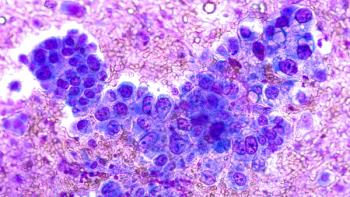
Development of Heart Disease in Early Rheumatoid Arthritis Patients
RA patients carry myocardial and vascular abnormalities even in the earlier stages of disease progression.
RA patients carry myocardial and vascular abnormalities even in the earlier stages of disease progression.
Patients with early rheumatoid arthritis (RA) may have reduced myocardial and vascular function, according to findings presented at the European League Against Rheumatism Annual Congress (EULAR 2015) earlier this year in Rome, Italy.
Researchers from the University of Leeds examined 66 treatment naïve patients with early RA in order to evaluate heart health in this patient population. The investigators utilized cardiac MRI to determine any changes present in myocardial or vascular function in patients who had not yet been treated for early RA.
The patients experienced RA symptoms for less than 1 year and had a minimum disease activity score of at least 3.2. The authors included 30 healthy control patients in the analysis who were matched for age, sex, and blood pressure.
The researchers noted that this study was the first of its kind to examine the data like this; previous studies already demonstrated left ventricular abnormalities linked to heart failure and cardiovascular morbidity and mortality.
Compared to the general population, the researchers added, patients with early RA had an excess risk of heart failure and associated mortality.
The study demonstrated that the RA patients had myocardial and vascular abnormalities even in the earlier stages of disease progression.
Additionally, the researchers believed developing early cardiomyopathy increased the risk for these patients’ cardiovascular morbidity and mortality from the time of their RA diagnosis.
“We’ve seen that, even in patients with early RA, changes suggestive of cardiomyopathy are evident, including reduced vascular function, ventricular volumes, and a trend towards a change in LV geometry,” senior author Dr. Maya Buch of the Leeds Institute of Rheumatic and Musculoskeletal Medicine, University of Leeds explained in a press release. “Further investigation will now be required to clarify the natural history of these changes, their clinical implications, and most importantly the scope to modify CV outcomes with effective RA therapy.”
EULAR guidelines suggest that RA patients with this increasingly impacted cardiovascular function have their symptoms managed by a specialist with one or more disease modifying anti rheumatic drugs (DMARDs) to suppress the inflammatory process.
The statement added that aortic stiffness is generally accepted as an independent factor to cardiovascular mortality and is measured by aortic distensibility (the ability of the artery to expand). In the RA patients, distensibility was reduced. Other measures of arterial stiffness showed similar differences, which the researchers noted were significant.
“Left ventricular and right ventricular end-systolic and end-diastolic volumes were all significantly lower in the group of early RA patients vs. healthy controls,” the statement concluded.
Newsletter
Stay informed on drug updates, treatment guidelines, and pharmacy practice trends—subscribe to Pharmacy Times for weekly clinical insights.














































































































































































































